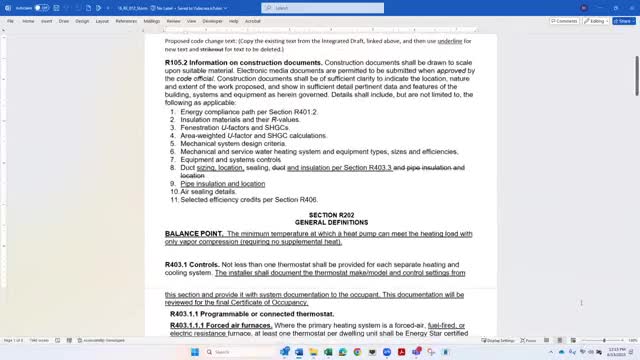Energy Board proposes significant updates to centrally ducted heat pump installation codes
June 19, 2025 | Building Code Council, Governor's Office - Boards & Commissions, Executive, Washington
Thanks to Scribe from Workplace AI , all articles about Washington are free for you to enjoy throughout 2025!

This article was created by AI using a video recording of the meeting. It summarizes the key points discussed, but for full details and context, please refer to the video of the full meeting. Link to Full Meeting
The discussion began with a focus on the importance of proper installation practices for centrally ducted heat pumps, which currently account for about 19% of primary heating systems in single-family homes across Washington. The council emphasized that correct equipment sizing, duct sizing, and control settings are critical to achieving the rated efficiency of these systems. Poor installations can lead to increased energy use, particularly through the unnecessary activation of supplemental heating, which is less efficient.

Before you scroll further...
Get access to the words and decisions of your elected officials for free!
Subscribe for FreeKey changes proposed include clearer documentation requirements for installers, such as specifying duct sizing in construction documents and ensuring that occupants receive detailed information about thermostat settings. The council also discussed the need for programmable thermostats that can effectively manage heating and cooling schedules, with recommendations to limit temperature setbacks to no more than five degrees to avoid confusion in system operation.
The meeting highlighted the necessity of aligning the code with modern heat pump technology, particularly regarding the prioritization of vapor compression heating over supplemental heat. Adjustments to the lockout settings for supplemental heat were also proposed, aiming to optimize performance in colder climates.
However, the council faced some pushback regarding the potential chilling effect of these regulations on homeowners considering heat pump installations. Concerns were raised that stringent ductwork requirements could deter retrofitting efforts, as many existing systems may not meet the new standards without significant renovations. The council acknowledged these concerns and discussed the importance of balancing efficiency with practicality to encourage the adoption of heat pump technology.
As the meeting progressed, members debated the specifics of the proposed balance points for heat pump sizing, with some advocating for adjustments to ensure that systems do not short cycle, which can lead to increased wear and tear. The council ultimately agreed to further refine the language of the proposal to clarify these points and ensure that the regulations support both energy efficiency and homeowner accessibility.
In conclusion, the proposed changes to the building code reflect a significant step towards improving the efficiency of centrally ducted heat pumps in Washington. By reinforcing best practices and ensuring clear documentation, the council aims to enhance the performance of these systems while navigating the complexities of existing infrastructure and homeowner concerns. The final decision on the proposal will be made in subsequent meetings, as the council continues to refine its approach to energy efficiency in residential heating systems.
Converted from SBCC WSEC-R TAG Meeting - June 13, 2025 meeting on June 19, 2025
Link to Full Meeting
Comments
View full meeting
This article is based on a recent meeting—watch the full video and explore the complete transcript for deeper insights into the discussion.
View full meeting




